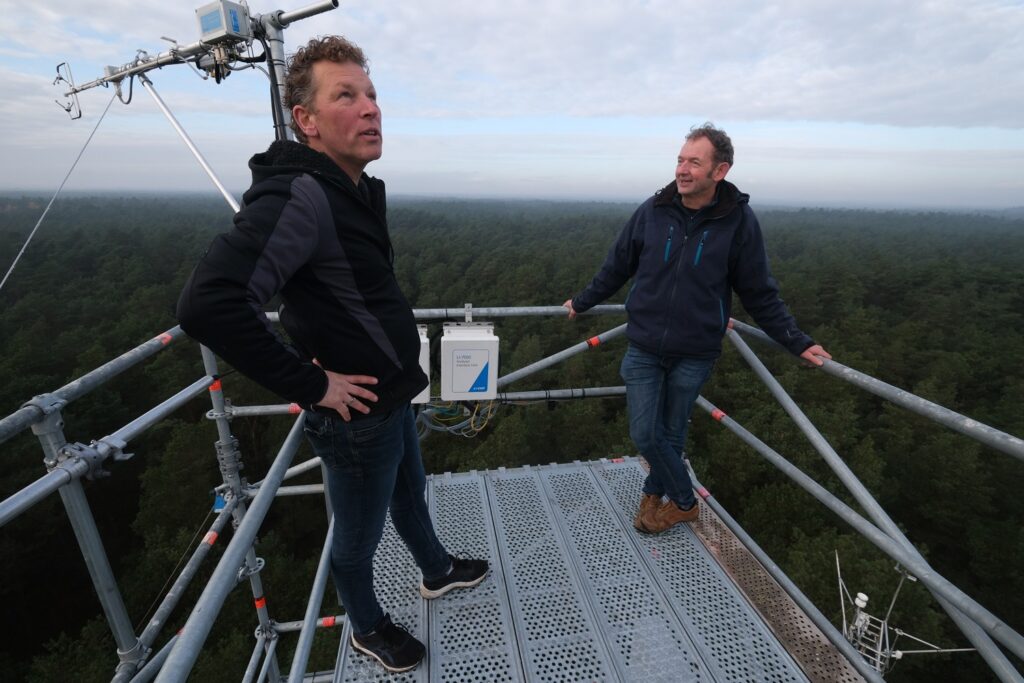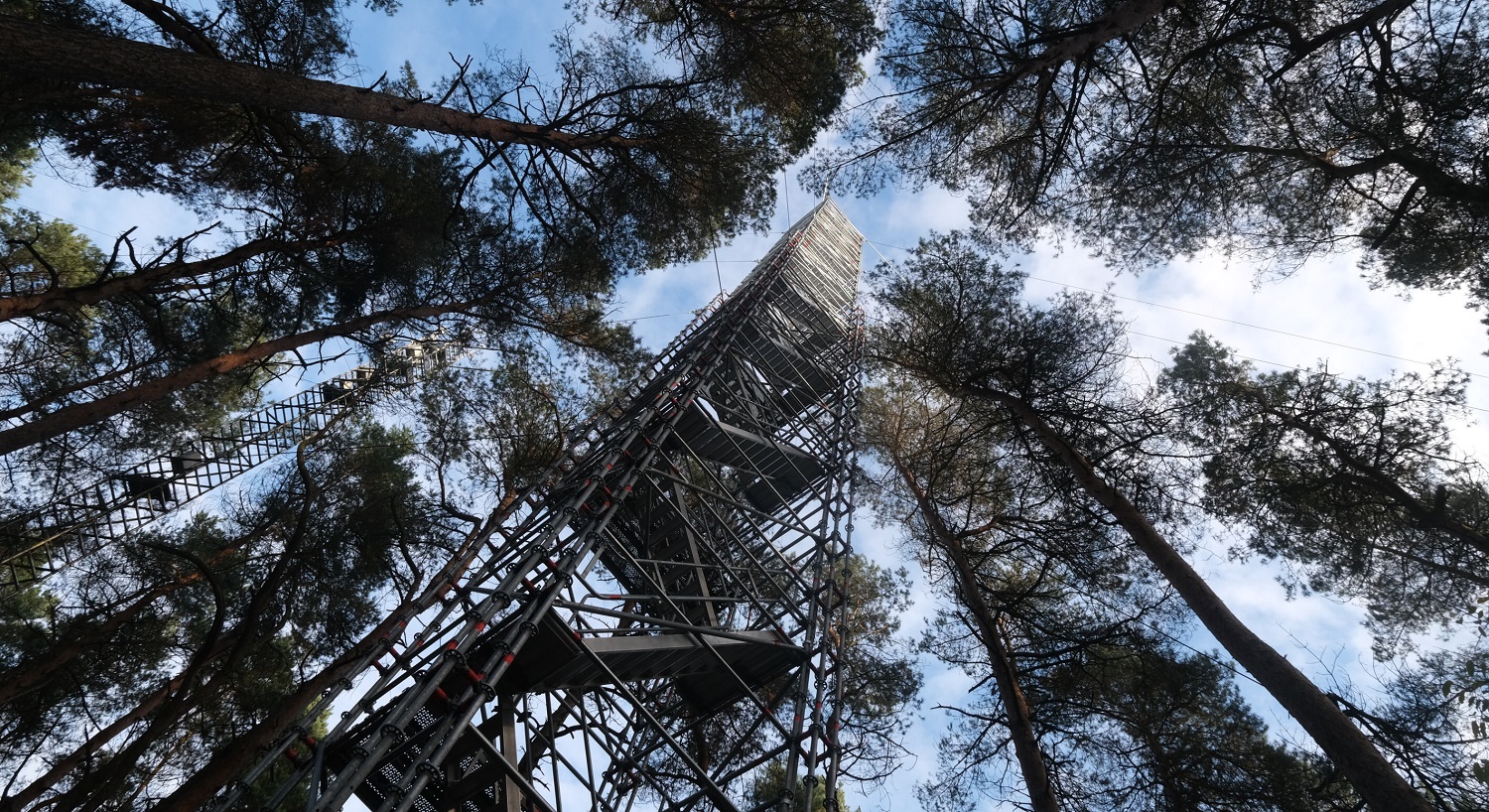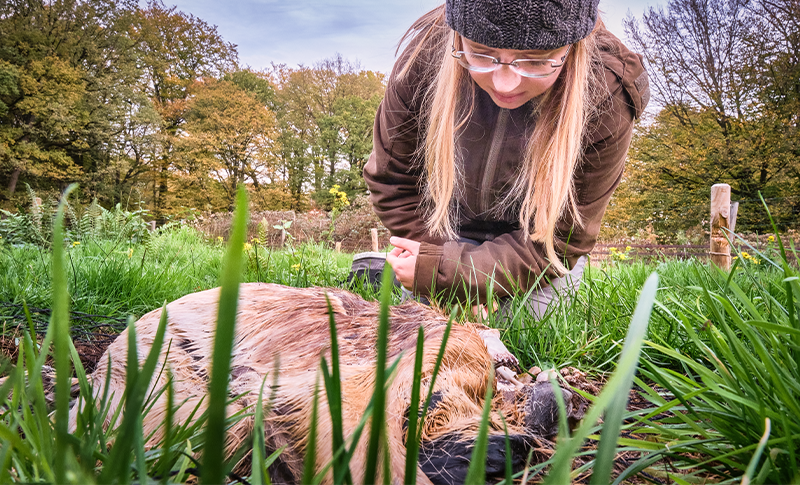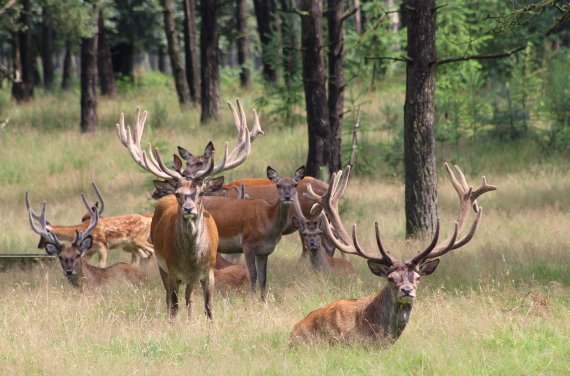Teacher Michiel van der Molen shows off “his” tower with suitable pride. In spite of its height (36 metres), the construction is only really noticeable from a short distance. The tower is constructed from scaffolding and has 18 floors. The view from the top, a 180-step climb, is gorgeous. Forest all around, the Kootwijkerzand in the distance. On a clear day, one can even see the wind turbines near Ede. The campus is just beyond the horizon.
A smaller tower has been in place since 1996. ‘The first in the Netherlands and one of the first in the world at the time, constructed to measure the exchange of CO2 between the forest and the atmosphere’, Van der Molen explains. This yielded an extensive sequence of measurements. The reason for the construction of a new tower is immediately apparent: the old tower is too small.
Half a hectare of forest compensates for the carbon one average household emits
Michiel van der Molen, Meteorology and Air Quality lecturer
At the time, the tower was five metres higher than the treetops in the forest. Not anymore, which means the measurements no longer meet the standards laid down in European protocols. Funding was petitioned from the NWO (Dutch Research Council) to build a new tower. Van der Molen: ‘This is necessary if we mean to remain part of the global top and the Integrated Carbon Observing System, the European CO2-measuring infrastructure.’

The equipment on top of the tower measures wind velocity and the CO2 content in the air 20 times per second. ‘You can derive the amount of CO2 absorbed by the forest from the vertical component of the wind velocity and the change in CO2 content in the air’, Van der Molen explains. ‘This is the balance between absorption (photosynthesis) and emission (breakdown of dead matter).
Scots pine
The net absorption amounts to approximately half a kilo of carbon per square metre per annum. Van der Molen: ‘That’s quite a lot. Half a hectare of forest compensates for the carbon one average household emits.’ The measurements, however, only accurately reflect the absorption of this forest of 110-year-old Scots pines that were planted to reduce the impact of drifting sands.
We look at how the carbon absorption changes under different circumstances
‘You cannot simply translate the measurements to a more diverse forest’, the researcher says. ‘But we are mainly looking at how the carbon absorption changes under different circumstances. What happens during periods of prolonged heat or draught? This information helps us to understand how this CO2 equilibrium works, and that insight can be applied to other types of forests.’
Website
A modern network sends all the measurements directly to the campus. Van der Molen is even able to access them from his home. He is still working on a website that will allow the general public to see the data. ‘I am eager to launch a website that shows the evaluation over the last days or week.’
The tower is not used exclusively by WUR meteorologists. Researchers from Utrecht University, TU Delft and the RIVM will also use the tower. Several departments of WUR’s Environmental Sciences Group conduct research in the forest. And in the summer, a field practical is to take place, during which the photosynthesis in leaves will be measured.

 Photo Guy Ackermans
Photo Guy Ackermans 

